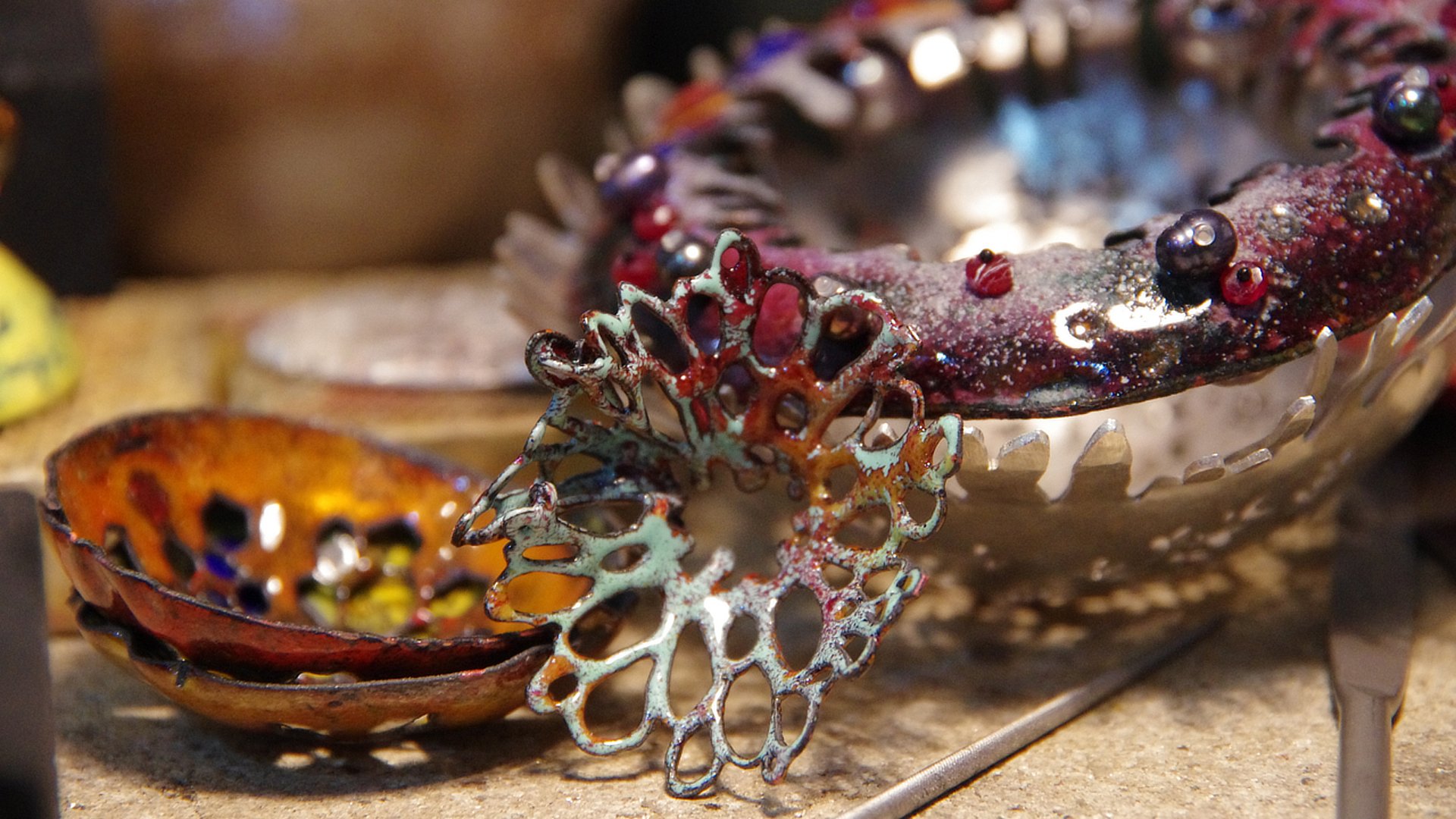
blog
Welcome to my blog. This is a place where I think out loud, show you what I’m up to in the studio, share impressions of inspiring events or everyday moments that moved me. Some entries are carefully curated essays, others are just a few thoughts, sometimes written in English and sometimes in German.
Featured posts

newest blog entries:
SÜDAFRIKA: VON FELSEN, (WARTE)SCHLANGEN UND VERBORGENEN WELTEN
Eindrücke unserer Reise in mein Heimatland Südafrika.
SÜDAFRIKAREISE
VON FELSEN, (WARTE)SCHLANGEN UND VERBORGENEN WELTEN.
Auf Deutsch.
Wieder in Bamberg ist der Himmel weißgrau und wetterlos – kein Regen, keine Sonne, kein Schnee, keine Bamberger Schäfchenwolken. Nur ein weißes, stilles Nichts, eigentlich perfekt zum Ankommen und Verarbeiten der Reiseeindrücke.
Zum ersten Mal waren Alvaro und ich also gemeinsam in meinem Heimatland Südafrika, und so sehe ich viele Eindrücke wie mit einer Doppelbrille gleichzeitig ganz neu zum ersten Mal, aber auch als Normalität, als eine Erinnerung an mein früheres Leben dort. Südafrika ist ein Land von beeindruckenden Kontrasten, ein Land der unterschiedlichsten Wirklichkeiten. Unzählige gelebte Schicksale verweben sich zu einem dicken Zopf aus Weltgeschehen, dessen unterschiedliche Stränge doch eigenen Gesetzen und widersprüchlichen Logiken folgen, und dazu so unterschiedliche Selbstverständnisse in sich tragen.
Ein Teil meiner Familiengeschichte flicht sich hier im 19. Jahrhundert ins Geschehen, als ein Schwede nach Südafrika auswandert und dort eine Familie gründet. Wir besuchen meine Großeltern auf ihrem kleinen Weingut, das in den Hügeln um Stellenbosch liegt, zwischen der letzten Düne des Meeres und den ersten Granitbrocken der nahen Berge. Wir besuchen meine Mutter, die Haus und Garten in ein schattiges Refugium verwandelt hat. Wir besteigen den Tafelberg, wandern, fahren ans Meer, besuchen Freunde, streifen durch die Landschaft, sammeln bruchstückhafte Eindrücke. Davon teile ich einige Fragmente.
Der Cabernet Sauvignon meiner Großeltern; die Reben sind so alt wie ich.
Das alte Farm-Wohnhaus im kap-holländischen Stil, fast versteckt im dicht gewachsenen Garten mit Feigen, Palmen, Hibiskus.
Mandelernte. Das kapländische Klima eignet sich bestens für Mandeln, die im Januar aus der grünen Außenschale platzen und dann geerntet werden können. Im großzügig angelegte Obstgarten meiner Großeltern gibt es fast in jeder Jahreszeit Arbeit.
Die steile, von Felsbrocken übersähte Skeleton Gorge ist eigentlich ein Flussbett, in dem einer der vielen Wege nach oben führt.
Auf dem Tafelberg sind ganze Welten in Felsschluchten und Hochplateaus verborgen. An einem sonnigen aber zum Glück etwas windigen Tag führt mein Bruder uns einen Lieblingsweg hinauf. Wir klettern durch die felsige und dicht bewaldete Skeleton Gorge immer höher, und unter uns breitet sich die Millionenstadt endlos und glitzernd aus. Noch höher, und wir sehen das Meer, den großen Bogen der False Bay und die violetten Bergketten dahinter, die das Kap vom Landesinneren trennen. Oben auf der zerklüfteten Ebene des Tafelbergs gibt es zahlreiche Wege, die sich durch die atemberaubende Fynbos-Welt schlängeln. Fynbos gibt es nur hier im Westkap: eine heimische Mischung aus Proteengewächsen, Gräsern, zarten Kräutern und Blumengewächsen, die teilweise so speziell an ihren Lebensraum angepasst sind, dass sie nur in einem winzigen Gebiet überhaupt vorkommen. Wie etwa der Silberbaum Leucadendron argenteum, ein Proteengewächs mit mysteriös schimmernden Samtblättern, das allein an den schattigen Hängen des Tafelbergs wächst, nirgends sonst.
Wir picknicken in einer schmalen Schlucht, mitten in einem Flüsschen, eingebettet in Farne und von knorrige Stämmen beschattet, deren Wurzeln sich auf unverständliche Art und Weise im Gestein verkeilt haben. Das Wasser ist kühl und rein, aber bräunlich wie Tee, und ich schöpfe gierig davon mit hohlen Händen.
Jede Windung im Weg zeigt eine ganz neue Welt, ein neues Mikroklima, eine eigene Mischung aus Sonne, Wind, und Wasser, die jedem Berghang und jeder Schlucht ein individuelles Kleid schneidert. Als Wanderin fühle ich mich klein und unwissend neben den Felsgiganten; was verstehe ich schon von den geheimen Zusammenhängen dieser uralten Welt? Wie wenig durchblickt man beim Durchstreifen dieser Landschaft, man sieht doch bloß das Alleroberflächigste.
Ein Blick zurück in die soeben hinaufgekletterte Schlucht und über die Cape Flats.
Ein schmales Plateau, übersäht von leuchtend lachsfarbenen Watsonien, deren Zwiebelknollen eine Lieblingsspeise der kapländischen Stachelschweine sind.
An einem Flüsschen, das fast die Farbe des heimischen Rooibostees hat, wird Rast gemacht.
Ein alter Baum, verankert im Fels, mit knubbelig-flauschigen Moosinseln bewachsen.
Sogar Wasserreservoirs gibt es oben auf dem Tafelberg: Anfang des 20. Jahrhunderts wurden hier mehrere Dämme gebaut, um Trinkwasser für die Stadt am Fuß des Berges zu speichern.
Im starken Kontrast dazu steht der Besuch bei Home Affairs, dem Bürgeramt. Denn mein Pass muss erneuert werden. Bereits in Deutschland war ich wiederholt in München beim Südafrikanischen Generalkonsulat zur Verlängerung meines Reisepasses. Das Vorhaben scheiterte an meinen durch die Goldschmiedearbeit abgeschliffenen Fingerkuppen der linken Hand, die im altmodischen Stempelkissen nur mangelhafte Fingerabdrücke hergaben. Bürokratie ist leider in allen Ländern unumgänglich, und so stelle ich mich bei Home Affairs in die Warteschlange, Termine werden nämlich keine vergeben. Stattdessen wartet man in langen Schlangen in der gnadenlosen Sonne; erfahrene Bürokratiegänger kommen mit Campingstuhl, Kreuzworträtsel und Schirm, und einer Tüte voller Geduld. Es gibt sogar professionelle Warter, die sich frühmorgens in die Schlange stellen und später ihren Platz gegen einen Geldschein wechseln, meist zu aufgebrachten Protestklängen der hinter ihnen Stehenden. Jedenfalls fand mein stilles Drama nach vier Gängen zum Amt ein Ende, als ich endlich, nach fast acht Monaten vergeblicher Versuche, mein kostbares Reisedokument in Händen hielt und damit wieder heim nach Bamberg durfte.
Wer klug ist, fährt in entlegene Städtchen ins Bürgeramt, um die sich die allerlängsten Wartezeiten zu sparen, aber selbst hier warten schon mehr Menschen als an diesem Tag drankommen werden (die Schlange führt hinter dem Gebäude um die Ecke).
Auf einem Flohmarktbesuch gehen uns die Augen über: So unendlich viele gelebte Leben, deren Überbleibsel hier auf geblichenen Plastikplanen ausgebreitet angeboten werden, so viele Geschichten, zu viele, sie überhaupt alle wahrzunehmen, geschweige denn einzufangen.
Flohmarktgetummel.
Wir beobachten wie eine Frau um einen Föhn feilscht und diesen dann nach erfolgreichem Kauf zusammen mit ihren anderen Einkäufen davonträgt.
Alvaro, immer auf der Suche nach alten Werkzeugen und anderen Schätzen.
Am Meer in der Nähe von Hermanus verliere ich mich in den kleinen Tümpeln, die nur bei Ebbe zwischen den zerklüfteten Felsen zu erreichen sind, nur nach mühsamen Kletterpartien auf den scharfkantigen Steinformation. Die kleinen Mikrokosmen der Gezeiten sind wie umfriedete Paradiese.
Wir besuchen Freunde in Hermanus, wo geheimen Welten in der zerklüfteten Felsenküste die Fantasie beflügeln. An manchen Tagen tummeln sich hier auch Wilderer, die illegal nach Abalone tauchen um diese Delikatesse auf dem florierenden Schwarzmarkt zu verkaufen.
Ich finde Kompositionen aus moosigem Grün und zartem violett, hell-orangene Flecken, kostbare Stückchen Welt die ein Gewimmel von Leben beherbergen. Ich kann sie weder besitzen noch einfangen, denn die Wasseroberfläche schäumt und spiegelt und meine Kamera versagt kläglich. Vielleicht mit Aquarell und Papier, denke ich, auf dem spitzen Fels balanciert, aber vielleicht auch einfach nicht; vielleicht muss man dieses schimmernde Bild allein in der Erinnerung aufbewahren. Manche Tümpel sind dicht mit Seeanemonen besiedelt, in anderen gibt es wieder keine einzige Anemone und dafür eine Menge farbenfroher Seeigel. Und Seesterne, Muscheln, Flechten und Seetang, kleine Krabben, leere und teilweise wieder neu bewohnte Schalen, Totes und Lebendiges durcheinander. Die Grenze zwischen Tier und Pflanze, Alge und Pilz scheint verwischt, der ganze Tümpel atmet im Rhythmus der Gezeiten und wird zur zusammenhängenden Kreatur.
Hermanus.
Wer hat sich eigentlich schonmal die Unterseite eines Seesterns angeschaut?
Farbenfrohe Seeigel, die verschiedene Muscheln und Steinchen mit ihren feinen Saugärmchen festklammern, vielleicht um sich unter dem Geröll zu verstecken.
Das Licht hier im Süden ist anders, ganz eigen, es fällt nachmittags mit weichem Märchenschimmer und überzieht alles mit einem Hauch von Gold-Blau.
Die Farben schillern verheißungsvoll und sind doch beinahe unmöglich einzufangen. Gesprenkelte Seeanemonen verbergen sich zwischen ebenfalls gesprenkeltem Muschelsand, darüber ein Spiegelbild mit Hut.
Leere Gehäuse und ausgelebte Existenzen.
Die Reise ist zu kurz, all das Gesehene zu begreifen und zu artikulieren, aber es bleibt ein Bodensatz an Eindrücken an der Seele haften. Und die kostbare Erfahrung bleibt, dass jeder seine eigene Geschichte mit sich trägt und seine eigene Wirklichkeit lebt. Wenn ich heute auf meinem Sonntagnachmittagsspaziergang die Bamberger in ihre Wintermäntel gehüllt sehe, freue ich mich auf alle anstehenden Begegnungen im Atelier, auf alle die Schicksalswendungen, die mir im Laufe des Jahres zugetragen und erzählt werden, und die ich dann anschließend als kostbare Erinnerung in Schmuckstücke konservieren kann. Denn das ist mein Leben so wie ich es mir erträumt habe - im Fertigen der Schmuckstücke tragbare Geschichten erzählen.
Zu Besuch auf dem eindrucksvollen Weingut Babylonstoren, dessen aufwendig gestaltete Gemüsegärten alle Gartenliebhaber träumen lässen.
Newcomer
I’m new in town. So the natural thing for me to do is to explore, to go on long winding walks, criss-crossing the streets until I can assemble a map in my mind. Walks as long as my time and the limited daylight hours and our current lockdown curfew will permit.
Newcomer
Bamberg: I’m new in town. So the natural thing for me to do is to explore, to go on long winding walks, criss-crossing the streets until I can assemble a map in my mind.
Written in English.
I’m new in town. So the natural thing for me to do is to explore, to go on long winding walks, criss-crossing the streets until I can assemble a map in my mind. Walks as long as my time and the limited daylight hours and our current lockdown curfew will permit.
To live in a time with a government-imposed curfew! I never imagined it, it seems so bizarre. A curfew used to remind me of Second-World-War-stories, with grandmothers telling tales about blacking out windows with towels around the edges at night, stories of enemies out there, scared glances, and stealthy lovers sneaking home at night, carefully avoiding open stretches between houses. Now, we’re scared of a different enemy out there, an invisible one, all the more stealthy because we expect it in our neighbour’s friendly embrace, in our sister’s greeting and our business partner’s handshake.
I have lost myself in the narrow winding alleyways of one of Bamberg’s seven hills again, alleyways that provide barely enough space for a small waste bin, a parked (unlocked) bicycle and one human being passing by. The cobblestones are sloped towards the middle, catching puddles of ice-crusted water from yesterday’s now melting snow.
An imaginary parade of Bamberg’s oldest inhabitants, tilted in mutual support. In my mind, those remembered images of real houses from my meandering walks are fused together into imagined compositions, half fact, half fiction.
The city has a multitude of faces, that much I’ve seen already. As the winter landscape is drained of colour, and the last dregs of sunlight subside, my eyes become more attuned to these soft winter hues, micro-nuances of colour, much gentler than the glaring summer light. The eye learns to pick out and compare the most subtle differences. These are colours much too elusive, their only names might be obscure numbers on some highly technical colour chart. But how much more romantic to call the colour of the sky “swan blush” than “pantone 434M”.
These narrow streets are not as crowded as the main city centre: broad streets lined with stucco-covered historical buildings and shops. Although, even those are almost deserted now in comparison to the usual tourist bustle. There is something forlorn about these shop windows now, large posters with “SALE!!” written across them in bold red letters, “SALE 50% OFF” and “EVERYTHING NEEDS TO GO”. Some shopfronts are already empty like dark holes in the lit consumerist parade, rotten teeth. Some are dismantled, LED-signs hanging from a single wire, cardboard boxes stacked inside. Soon, the empty slot will be inhabited by another chain store.
Although, maybe not, who knows, since Bamberg’s citizens are heroically patriotic, supporting their local community businesses in ever more ingenious ways despite the national Corona restrictions. It’s a joy to watch.
To me, Bamberg features all those gloriously magical details I spent the siesta hours of my childhood discovering in gothic fairy tale books and glossy (and heavy) compilations of Romantic landscape paintings. It’s all here: The crumbling medieval houses – although the city centre is pristinely preserved and has certainly earned it’s UNESCO World Heritage status – so you have to search for those at the fringes; the moss-covered walls and stained roof tiles; the angular corners of houses unplanned and organically grown like bursts of mushrooms; the gilded church spires and patinated copper domes; the secret alleys and shortcuts; the river with its small surface twirls indicating treacherous currents underneath; the swans and waterfowl; the ancient oaks in the park that have survived wars and pandemics alike, and seem to be watching us with serious faces, branches weighed down with lichens and moss, in truth not single trees but a multitude of beings, inseparable now, tethered to their mutual network of lived history.
And the Altenburg Castle, perched on its hill above the town. Although it is neither as old nor as crumbly as some other castles in the area, it is undeniably very castle-like and quite beautiful, especially now, lit in an orange halo in the blue snow dusk. There is the forest all around, silent and loud at the same time with trees whispering, watching. There are golden sandstone walls and buildings and statues and carvings in an astounding luminous ochre the colour of golden local beer (which is plentiful), honeyed stones revealing their true splendour in the slanted sunlight.
There are so many stories layered here, dark-edged stories, stories that seep out of the mossy stones and pool black and menacingly around your feet as you pause. And there is lightness too, stories of relentless building and rebuilding, of crowning things, of preserving things, of weathering out storms and chiselling sacred knowledge into maps for future generations to rediscover.
There are cries trapped in the rough stone, burnt witches’ cries and zealous believers’ cries and shouted salutes to the Führer, cries of pain and joy, panic at the sight of the next shattering ice flood thundering down the river and tearing away bridges and houses in its path, peasant uprisings, foreign conquests, ancient ideologies. And as the brittle stones erode in our current-day tornado, I can almost watch those trapped cries escape like frozen particles in Antarctic ice melting. All those criers, I remind myself, they were all brought into this world by a mother, hopefully they were loved, and loved others in turn, they ached for safety and beauty and hoped to care for those closest to them, they grieved, they trusted in something, and they all crafted away at their intimate little dreams.
To be part of a multitude like this, and stand alone at the same time, feels infinitely powerful. I am quite excited to roam these streets until every corner is familiar, and then to watch the familiar change with the seasons, and then some more.
Altenburg Castle cushioned on its snow-topped hill above the city.
Watercolour and ink illustrations by Nora Kovats.
Mobilia Gallery Exhibition
Covid-19 has taught us artists and galleries to diversify our sales channels, and I am curious to see how this trend will evolve, which technologies prove to be useful and which are less helpful, which alternative methods of communication have the ability to truly touch people.
Mobilia Gallery
Exhibition titled JEWELLERY FROM ARCHITECTURE at Mobilia Gallery.
Written in English.
A small collection of my work is currently part of an exhibition at Mobilia Gallery in Cambridge, Massachusetts titled JEWELLERY FROM ARCHITECTURE. The gallery has created a delightful digital catalogue to accompany their exhibition. If you are interested to see it, please contact me or email Libby and Jo Anne directly at mobiliagallery@gmail.com. Alternatively, see the online design store Mobilia has put up on their website.
Covid-19 has taught us artists and galleries to diversify our sales channels, and I am curious to see how this trend will evolve, which technologies prove to be useful and which are less helpful, which alternative methods of communication have the ability to truly touch people. To me, it seems that the digital catalogues and online collections we are creating now also function as beautiful chronicles of the work we make, perhaps a sort of 21st century florilegium to gather and curate that which emerges from our creative practices.
Here is a screen shot of the gallery’s online display, and a selection of pieces specifically created for Mobilia Gallery:
Screen shot: Mobilia Gallery’s DESIGN STORE.
Red Closed Garden.
Pendant/Neckpiece. Vitreous enamel on copper, sterling silver (partially oxidized), orange-brown hand-stitched silk thread. Hand sawn, enamelled, fabricated.
Red Tilia.
Earrings. Vitreous enamel on copper, oxidised sterling silver hooks, black freshwater pearls, cubic zirconia drops, garnet, black nylon. Hand sawn, enamelled, fabricated, constructed.
Phoenix. Neckpiece. Vitreous enamel on copper, oxidized sterling silver clasp, silver cable, garnet, carnelian, onyx. Hand sawn, enamelled, fabricated.
Poeletjie II.
Brooch, also wearable as a pendant. Vitreous enamel on copper, sterling silver back, steel needle, faceted citrine and phrenite drops.Hand sawn, enamelled, fabricated.
Poeletjie III.
Brooch. Vitreous enamel on sterling silver, sterling silver back, steel needle, faceted phrenite drop. Hand sawn, enamelled, fabricated.
Tilia.
Earrings. Vitreous enamel on copper, sterling silver hooks, steel wire, citrine-smokey-quartz drops, peridot, pyrite, green garnet, 18 ct gold wire accents, nylon. Hand sawn, enamelled, fabricated, constructed.
Conscious Garden.
Brooch/Sculpture. Vitreous enamel on copper and sterling silver, blackened sterling silver back, steel needle, grey freshwater pearls, moss agate, and carnelian. Hand sawn, enamelled, fabricated, constructed.
Times of Corona
For my own sanity, I’m attempting to pick the positive details out of this situation, and I’d like to share a few of my thoughts with you today. This crisis, with all its threatening fear and floundering insecurity, is also a sort of retreat, a detox from the daily input overload and stress out there.
Botanical explosions on our kitchen table.
Suddenly we have all been thrust into a sweeping wave of incredibly disorienting and troubling times. As commerce, work and public life in Germany are slowing to a complete standstill, the air is thick with anxiety.
For my own sanity, I’m attempting to pick the positive details out of this situation, and I’d like to share a few of my thoughts with you today. This crisis, with all its threatening fear and floundering insecurity, is also a sort of retreat, a detox from the daily input overload and stress out there.
Hundreds of outwardly successful people pay good money for retreats to avoid mental breakdowns, confining themselves to some remote mountain village to meditate for days and limit their social contacts. Now, we’re being presented with this opportunity for free. I know that I could get lost in an ocean of fear and anxiety – a future fear that is all the more scary because it is vague and unspecific. I could also choose to train myself in trust, in becoming centered, in focusing on our shared humanity and gaining a larger perspective of our world, where our daily squabbles seem so trivial and useless.
We humans are amazing creatures. I believe that we have the unique ability to hold paradoxes in our mind, and this balance of seemingly irreconcilable opposites is exactly that place where our humanity flourishes. It’s that moment of inner freedom, where we are detached enough not to succumb to self-pity and emotional enough to feel real empathy, where we hold birth and death, joy and sorrow in one and the same space, with grace and dignity and (self-)love. This is my ambition for these upcoming weeks: practising to hold that difficulty within myself, being a witness, becoming really comfortable with paradoxes.
One of the most unsettling questions that is always posed by a real emergency is the question of relevance. Is what I do actually important? Is my work necessary for our society to survive and flourish? How is it relevant in a crisis? To answer that question for myself I have to be able to reconcile another paradox: my life, and what I do with it, is both impermanent and forever. We all are unimportant specks of dust in the universe and our lives are over in the blink of an eye, yet, at the same time, our actions have consequences in the here and now, and there are people who care about us deeply and our moved by us.
So I find myself thinking what matters most to me. Working for myself. Rediscovering that deep joy I feel when I am creating something, composing a piece of writing, painting a watercolour, imagining a sculpture or an intricate piece of jewellery. Cooking. Reading. Sharing stories around our kitchen table. Building an empire, a castle of imaginative output, that empowers people to learn to use their own creative imagination again.
Bearing all these thoughts in mind, this is what I am going to do (since all events such as craft shows, fairs, symposiums and exhibitions have been cancelled for the next couple of months):
1. I will draw as much as I can, trying to regain that spontaneity I had in my drawings as a child, back when drawing was my story-telling tool, before I became aware that my work could be judged by people. I will create really large spreads of tangled botanical fantasies and imaginary paradise gardens.
2. I will work on my online shop, which is now finally live on my website, to tell stories with my work and spread small slithers of joyful hope in the world.
3. I will establish a more regular blogging practice than I have had so far, publishing something, even if it’s only a short piece, every Friday, in an attempt to become a better writer and storyteller.
4. I will read all the books on my reading pile (reading Seven Fry’s wonderful retelling of Greek mythology at the moment, and Campbell’s Hero with a Thousand Faces, with slithers of Kafka in between).
5. I will design outrageous jewellery pieces with an unlimited imaginary budget.
6. I will design enamelled, jewelled, vertical-garden like botanical installations.
7. I will go for a walk every day, if I can, and watch nature wake up to spring.
8. I will pay more attention to my yoga practice and attempt to centre myself in my body, in the here and now.
9. I will plan future exhibitions and apply for shows later in the year or next year, since life will go on eventually.
10. I will have long conversations with people and talk about things that matter.
11. I will NOT worry about money now. I will not obsess about not being able to pay my bills in August because life is tough now. It’s just money, just numbers. Imagine this for a moment: what if the construct of money lost its value to us? What worth does money actually have, once we strip it of its meaning? Money is just a place-holder for real value. What value should we imagine instead? Things like kindness, nourishing food, good quality useful everyday things, hand-made beautiful objects, books and the treasures they contain, good quality content on the internet, music, art, films, poetry, games, laughter, our own time.
In this spirit I hope that all of you are doing well, that you can use this time to do all the things you ever wanted, that you can stay curious without becoming overwhelmed, and that you can take care of yourself and your loved ones.
Thoughts on Disappointment
So I’ve been thinking about disappointment all week. What exactly is this disappointment thing? How can we define it? It’s painful, yes, it has a lot to do with expectations that could not be met, but it’s not anger, it’s not really shame or guilt either. It’s sort of a hollow feeling, a space that would have held something glorious and sparkling and hopeful, and that is now empty.
When your way is blocked, suddenly, and you find yourself in a puddle of broken expectations. Photograph by Nora Kovats. Corridor flanking the courtyard at Hildesheim’s oldest cathedral.
So this year’s international trade fair in Munich, including all its special shows like Handwerk & Design and the SCHMUCK and TALENTE competitions, has been cancelled due to the corona virus threat. I’ve dreamed about showing my work at Handwerk & Design for years.
This year, I had forged my own opportunity to exhibit there by gathering a group of fellow artists from Berlin, envisioning and then organizing a group show that would have been more than just individual artists next to each other: it would have been a curated exhibition integrating eight different unique visual languages. For me, this was an ambitious project, one that has kept me increasingly busy since November, with the past six weeks becoming an organizational marathon. It was so wonderful to see this group of artists come together and give their time freely, discuss the most divergent ideas and reach conclusions and compromises, build tiny scale cardboard models of our display, render the display in 3D, then build the entire thing from scratch, even sawing the wood into pieces ourselves. Then, five days ago, this vision crumpled into sawdust as I received the news that the entire fair had been cancelled.
I wasn’t entire unprepared, of course not, with other trade fairs and large gatherings being cancelled all over Europe. But the disappointment was acute and real and painful, even though, honestly, the entire project might have been a failure even if the fair had not been cancelled.
So I’ve been thinking about disappointment all week. What exactly is this disappointment thing? How can we define it? It’s painful, yes, it has a lot to do with expectations that could not be met, but it’s not anger, it’s not really shame or guilt either. It’s sort of a hollow feeling, a space that would have held something glorious and sparkling and hopeful, and that is now empty. It’s a little paralysing, a melancholy type of inertia. It’s a vacuum that can now be filled - often with a squadron of negative emotions chasing each other into the ditch: frustration, self-flagellation, a crumbling self-esteem, disillusionment, bitterness and resentment.
The best place to observe your disappointment will always be nature. Going for long, aimless walks to fill empty spaces inside with simple grains of gratitude, watching nature grow and die and flower and crumble. Somewhere in Brandenburg. Photograph by Nora Kovats.
I keep asking myself how we ought to deal with disappointment? And what’s the point of it? Typically, I tend to react to disappointment with denial; I justify to myself that the disappointing event wasn’t really that important, I charge on with a new mission, never looking back, in a crazy storm of self-preservation. While that’s a great survival mechanism that has served me well in the past, I am not entirely convinced anymore that it is useful in the long run. I feel this process of extricating yourself from disappointment has a lesson to teach that I haven’t been ready to learn yet. It seems that I should sit with this disappointment for a few days, examine it, experience and articulate what it feels like before the void gets filled either with angry frustration or manufactured hope.
While it can feel like a curse, disappointment is in essence a resilience-building tool. It is a really vital part of our lives. To clarify, by that I don’t mean a tool to cultivate the ability to ignore disappointment, to readjust with superhuman speed and bounce back like a jack-in-the-box. Rather, what I mean is the capability to hold this disappointment, to embrace it, taste it, and then gingerly starting to re-fill the void with those first slithers of gold and dream dust. And bit by bit, you rebuild your vision, you make it better and stronger this time, the walls are more solid, the glue holding everything together is tougher because there’s a foundation cemented by the possibility of failure, and there’s a type of wisdom underneath that is heavier but also more real than your lighter, younger self’s view of life.
Disappointment is the supreme editor of our life plans. It’s a builder of strength and mutual empathy. Those cyclical ups and downs of hope and expectation, shattered by disappointment, and rebuilt again, are a kind of energy generator, an engine keeping us in motion, our feet on the ground and our head in the clouds.
Spaces to Fill. 2019. Watercolour & ink painting on Hahnemühle watercolour paper.
Thoughts on Making
There is this phrase of “putting a piece of your soul” into something you are making. Sounds a little vague and clichéd to me, to be honest. So let me explore what might be meant by that a little more.
Sometimes when I create something I reach a state of existence where I am so strongly present that the importance of making transcends any other purpose of making that object. At that moment, when my gestures become precise and measured, my breathing quietens down and my thoughts become silent, when I’m focused with a deep concentration and a peculiar effortlessness at the same time, when I am uniquely present, then I know. I know that I have reached a sort of harmony that in itself is such a gift that the outcome or the finished products matter much less than the making of. Sometimes it even becomes the only thing that matters in the world, if only for an instant.
When I’m really immersed in this transcendent state, a strange feeling will start to spread, starting somewhere behind my belly button in my middle and slowly filling my entire body with a warm sense of complete and utter contentment. It’s a state so peaceful that I can literally feel the stress and anger accumulated over the day evaporate from my body.
It’s not always easy to reach this state. Usually I’m too distracted or frustrated or scattered in my mind. Thoughts of the email I forgot to write this morning or the trash that I should take out or the online shop I need to curate (never mind make stock for it) keep crowding my mind. But occasionally I do manage to hover in that strange combination of deep concentration and letting go: A focus on my gestures and the tactility of my making and the inherent laws of the material I am working with, while simultaneously letting go of the nitty-gritty worries of my life. It’s like zooming out and bringing the world into perspective – a kind of bird’s view where it becomes clear that I as an individual human being really don’t matter so much, but that I am part of a system that is wonderfully mysterious and complex and that matters a great deal. And I feel a sense of peace at not having to understand everything about this.
So making, in other words, is not so much an action taking place, it’s a state of being. A condition that reconciles seemingly paradox aspects of life (and I believe that the human mind is perfectly capable of holding several contradicting ideas simultaneously): I as an individual am so present, so focused, so important, at the centre of this process of making, and I am also dissolving into it completely, melting into my surroundings, giving myself up to breathing creativity. My personal borders become porous to let inspiration in while some part of me, some essence, can leak out into the world.
This happens especially when materials/ingredients are transformed into something more in quite a rapid way or at least at an observable pace – when you can see the making as it happens. Like drawing or painting. Enamelling. Cooking. Sawing and smithing metal. Sewing and embroidery. Writing. Making music. Even gardening. You name it. These creative endeavours all have some characteristics in common:
They are tactile and sensual experiences, where touch is extremely important – feeling the texture and surface of materials beneath your skin. Which is why writing with a pen on paper is still so fundamentally satisfying in a way that typing on a computer never can be, although there are other benefits to that.
They are immediate and transformative: With some patience you can observe how the materials you are working with change into something else you are making. You can see it grow and evolve, watch paint dry and bread dough rise deliciously and sauce thicken.
They all have one component that is mechanical and one component that is spontaneous and unpredictable; the recipe based on the maker’s knowledge and the inspiration from thin air. When I enamel, for example, I have a basic idea what I am doing and what I want to achieve, there are laws of physics I have to obey, for example melting points of enamels and metals. But some part of the process is almost magical in its unpredictability. You have no idea how the patterns will melt into each other, how the speckles of powder will form unique textures. This is the alchemy of it, the everyday mystery I choose to live with.
Without exception, creating something in this way has a positive effect on both the creator and their environment; it cleanses the world from anger and hatred, and adds self-worth, value and joy.
So yes, when you buy something hand-crafted by me, it will be an object that is steeped in my existence, in my constant state of marvel at the world and my gratitude for being alive here and now. If I could, I wouldn’t want to put a monetary price on my work. But the thought of doing anything else with my time, of earning my living in a way where I have to deny myself this creative process, is unthinkable to me.
An Ode to Multidentities
I was nervous about that visit: I barely have an inkling of the emotional power that landscape can wield, but it’s enough to recognize that landscape is etched into our souls, that a mountain or an ocean can cry out to you and make you scatter all rationality to the winds, until you forget your very valid reasons for leaving that mountain, that sea, the very earth that brought you forth, even if they are reasons your very existence may depend upon.
Vineyards around Stellenbosch. Mountains, to me, have to be purple to be “real” mountains.
Originally written in April 2018.
As I’ve just returned from a six-week stay in South Africa, I am taking some time to digest my experiences and pick apart some my feelings about countries and identities.
South Africa to me is that exquisite country, the place I hail from and that shaped my personality, but not really my (only) home anymore.
Some time ago I uprooted my life there, packed it into a couple of suitcases, and let myself be blown up into the sky like a feather giving itself up to the wind. I touched ground again in Berlin, where I have begun to lay the foundations of a second home since January 2017. Now I have visited South Africa for the first time again after I left, revisited my past, sifted through old fear and pain and joy and broken love and adolescent shame and tokens of friendships. I was nervous about that visit: I barely have an inkling of the emotional power that landscape can wield, but it’s enough to recognize that landscape is etched into our souls, that a mountain or an ocean can cry out to you and make you scatter all rationality to the winds, until you forget your very valid reasons for leaving that mountain, that sea, the very earth that brought you forth, even if they are reasons your very existence may depend upon. So I was scared of that.
But I needn’t have been. This visit strengthened me in my dual identity and allowed me to articulate both my desire to really live that richness of a fragmented identity, and my inability to be only one thing. It’s true, I feel more of a South African now that I return to Berlin than I felt the whole of last year. But I am not an expat, I feel just as much German, with an added foreign tinge that is something else all together. For the first time, I feel liberated from that strange obligation of having to choose only one identity.
Even the way I speak is a testament to that: over the years, I have developed this unique accent when speaking English, distinctly European in my pronunciation, with a sing-song melody to my sentences, an unusual rhythm of sorts, and a rather large vocabulary for someone who was raised in another language, I’d like to think. At first, this accent bothered me a lot. Now I think it’s a wonderful fusion that bears witness to my life so far, and I wouldn’t want to lose it for the world.
What I have learned more and more over the past years is to make my work – my art – my true home. What I am attempting in my work is much larger than I am, larger than my life, an imaginary empire, a vast paradise garden, something that will remain after my body has become dust. I am tapping into a collection of ancient stories that have been the same since the birth of culture and will be the same until sapiens is extinct from the universe. And if I manage to remind a few people why life is worth living, my time here has been worthwhile.
So during this visit to South Africa I attempted to collect fragments of imagery, little pollen-sacks of memories, to be carried home – that other imagined home in my work – to become part of the layered visual language I am developing there. I’m taking those moments with me that will enrich and inspire my life, for now, and choosing to leave those things behind that burden and stress me unnecessarily. Perhaps there will be more writing about the dark side of life in South Africa at a later stage.
Into my imaginary suitcase I packed that rich diversity of the Cape Fynbos, intriguing with its inconceivably delicate structures contrasted with strong lines and hard scratchy stalks. Small bunches of bells that beckon the curious soul, the tiniest flowers, so indifferent and so lavishly scattered across the mountains. Thousands of furry leaves, soft as a Labrador’s ears, with red serrated tips. Dew drops in neat rows, glinting like diamonds and on some level infinitely more valuable because of their transient existence. Burned protea stalks silhouetted against bright yellow-green and rusty reds.
I’m taking with me that primordial taste of the ocean, the salty flavour of the womb of the world – exciting and comforting at once, with a wildness to it that envelops your whole body when you submerge yourself in it, inside and out. And that staggering rhythmic force of the waves rolling and tossing and pushing and pulling to remind myself that I am quite small, quite insignificant in this large world.
I’m packing the slow creeping of autumn in the vineyards around Stellenbosch, the place where I spent some of the most formative years of my childhood. That exquisite colour combination of burning reds bleeding into lime greens, of golden-ochre paling into blotchy browns. These colours act like a trigger with me; they cause some inexplicable sensation deep within me, a tearing, beautiful, aching kind of pleasure. Every single time, without fail.
I’m taking the purple ring of mountains, that protective embrace of the Gods, enclosing the Cape of Good Hope. The way the setting sun tints the rocks pink and violet, the Hour of the Mountains, the most precious moment of the day when Time holds its breath and a minute is longer than sixty seconds.
All of these treasures I packed, and many more, laughter and friendship, turreted castles made out of clouds, wholesome ancient foods, apples directly from the tree and grapes from the vineyard, wine that tastes like a song, sweat and salty wind in my hair.
And I want to merge these treasures with my daily urban encounters here in Berlin, treasures that are very different but equally precious in their own way. Keep an eye out for a new summer collection inspired by all these sentimental wanderings (with too many adjectives in every sentence).
The empty Theewaterskloof Dam in March 2018, and little hope of more rain this winter.








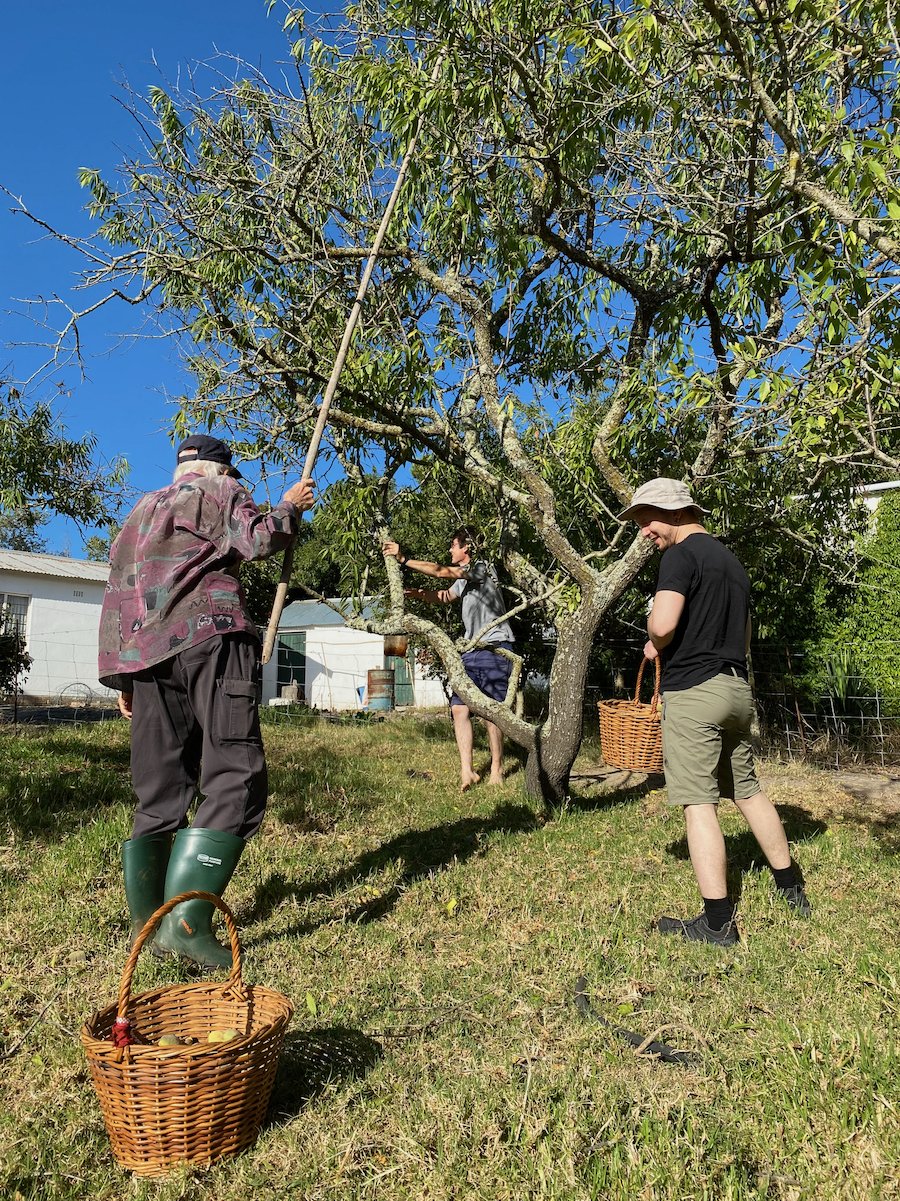

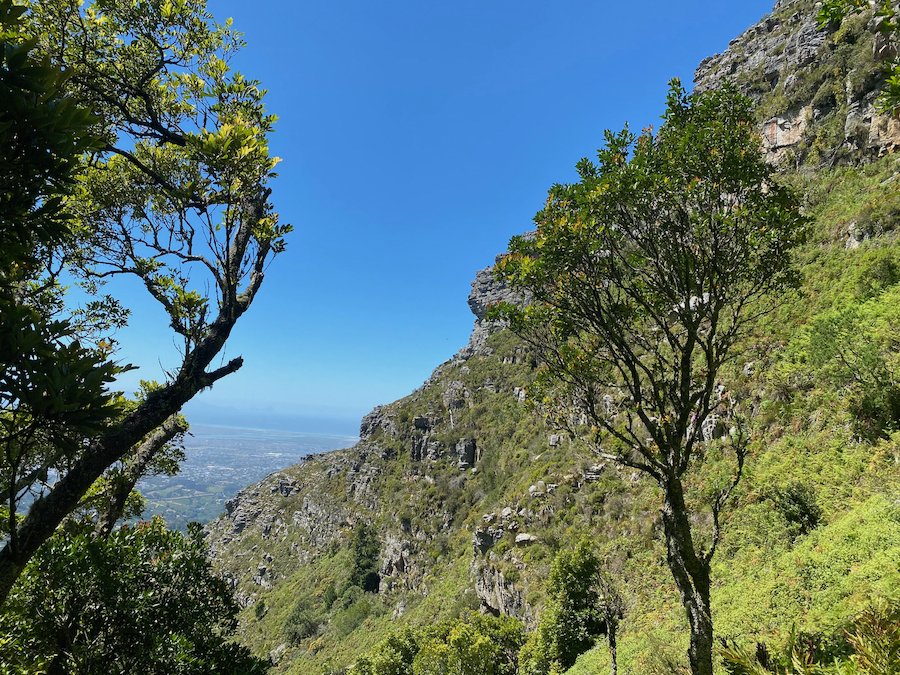
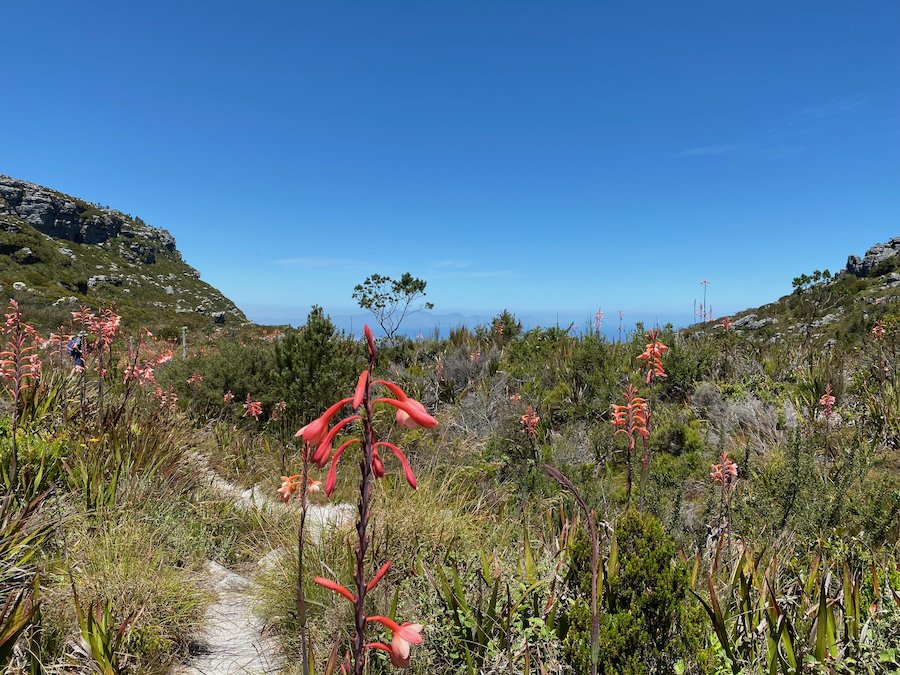
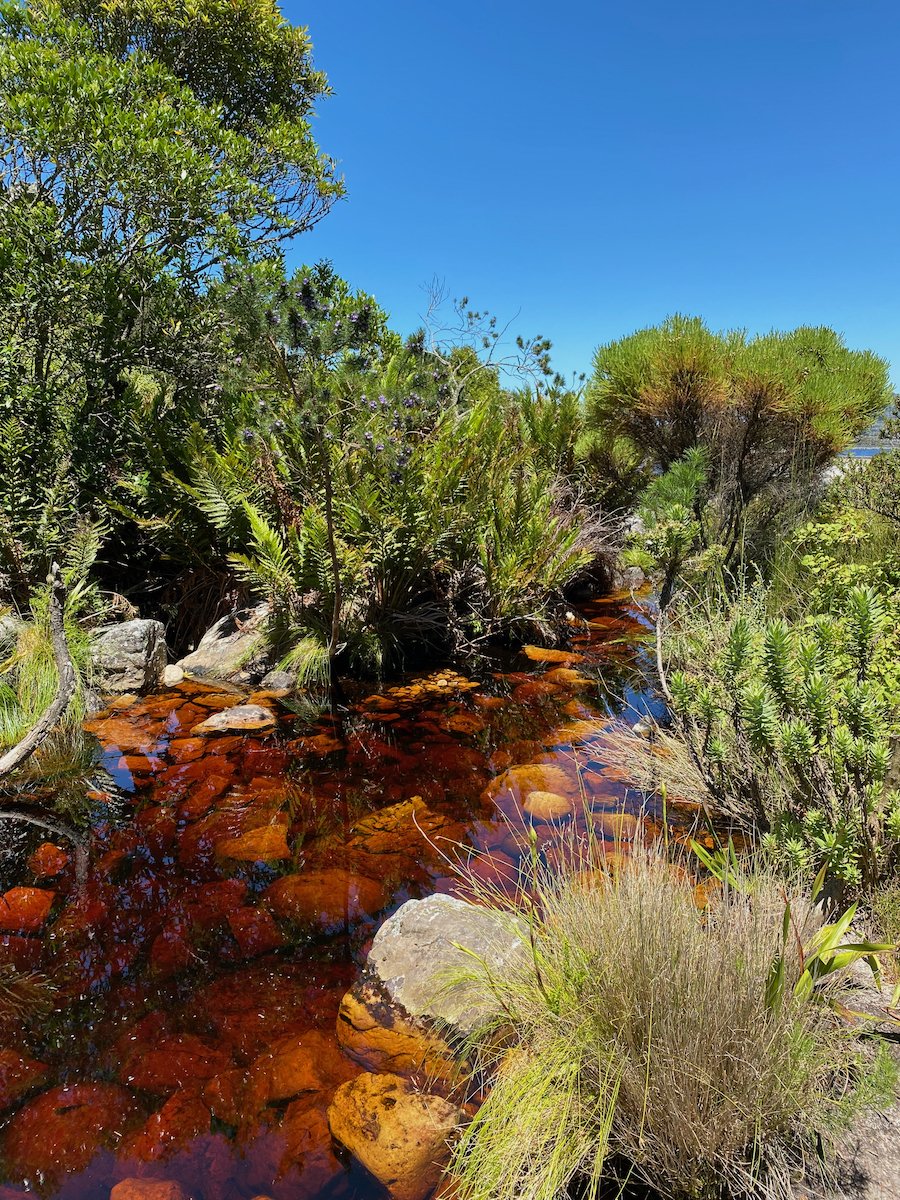

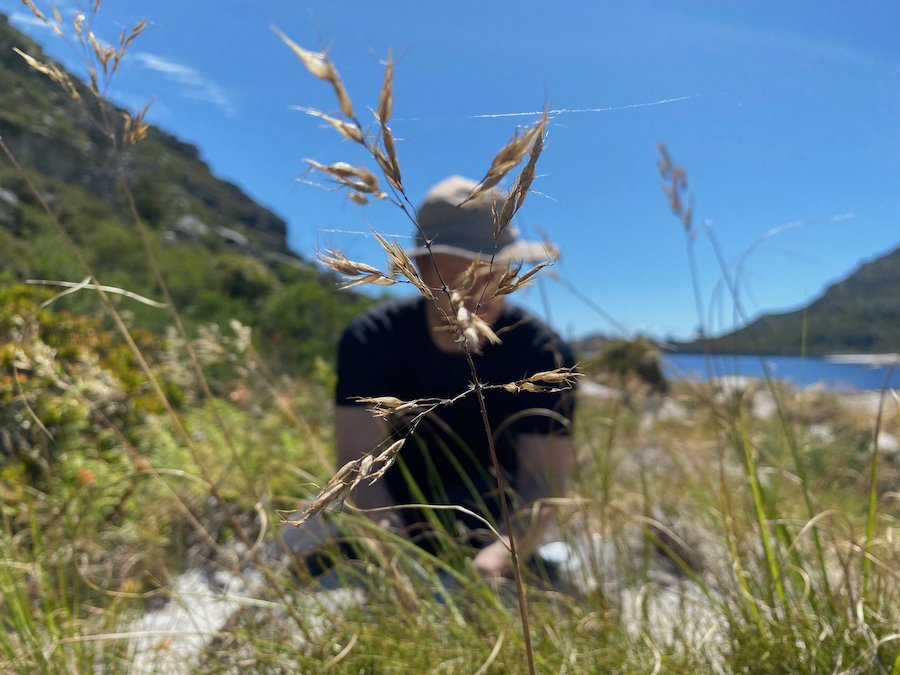






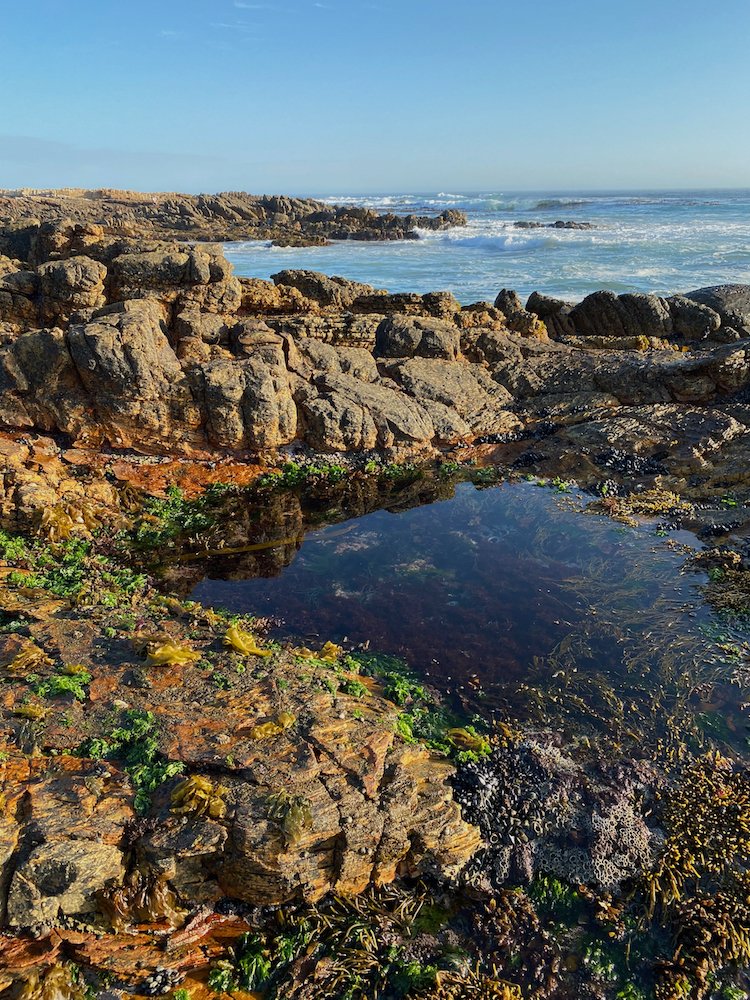

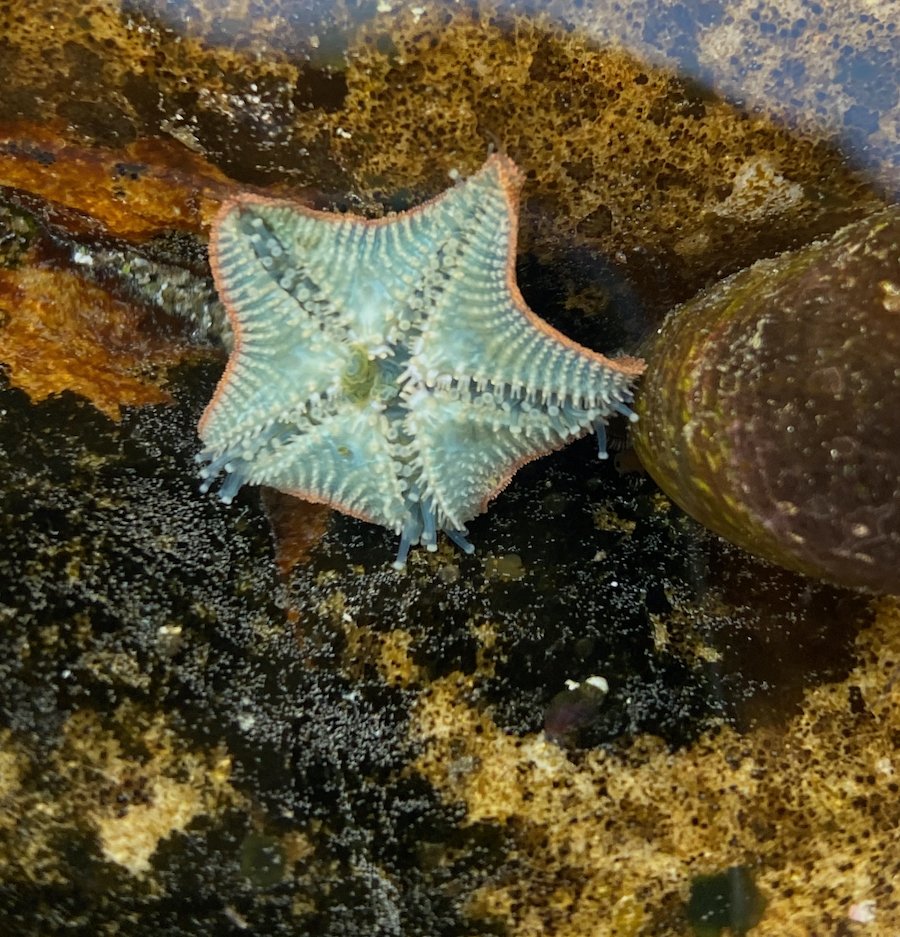

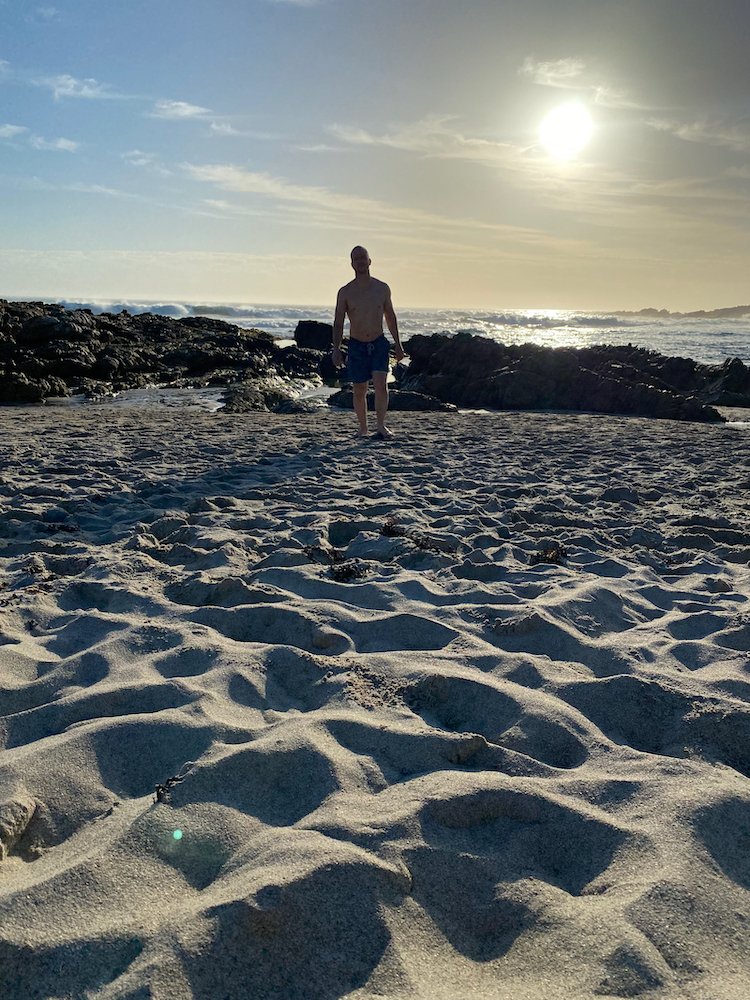

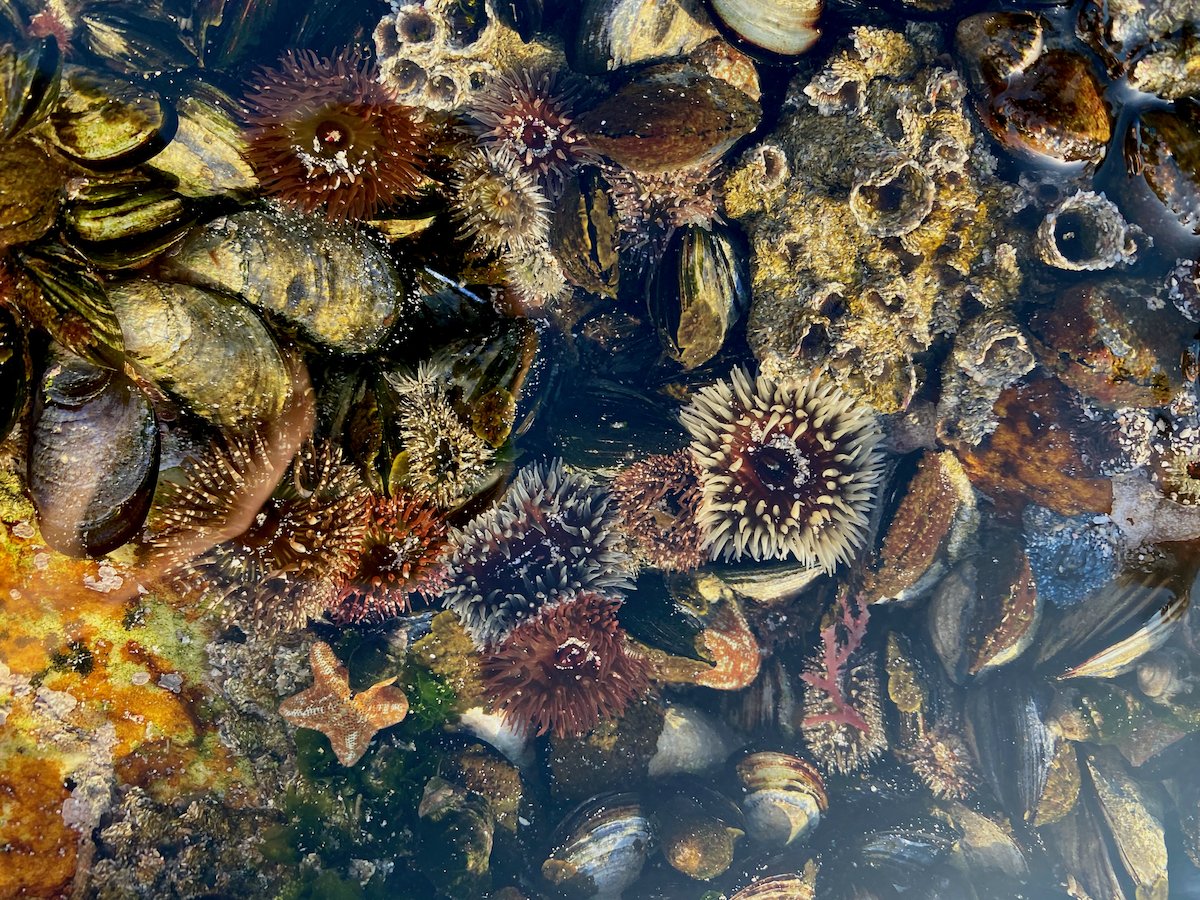





























It’s winter. I cherish this white and noiseless time between the bustle of our Christmas season and the start of the new year. Since moving to Europe, it’s taken me a few years to learn to fully appreciate winter. Now, I know it’s one of the reasons I wanted to move here in the first place: I needed a real winter, I needed its pause and reflection, its going-underground, its gathering-of-forces, its quiet stripping away of the unnecessairy, its gestation for new creativity to emerge.